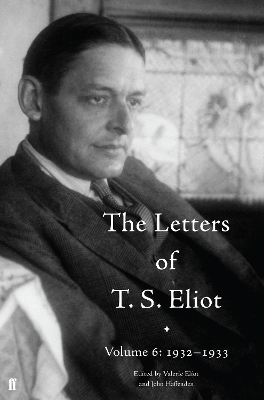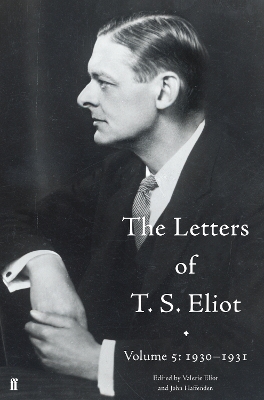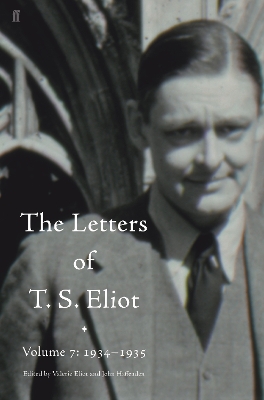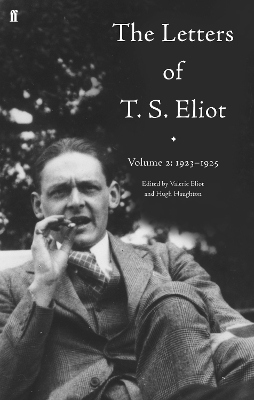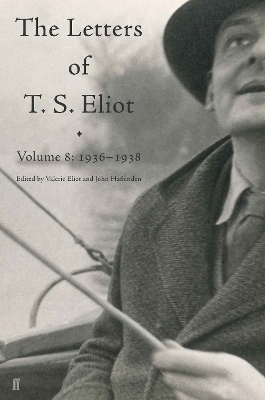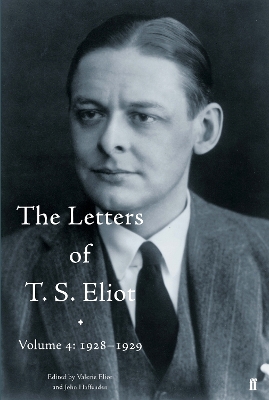Letters of T. S. Eliot
9 total works
He breaks free from September 1932 by becoming Norton Lecturer at Harvard. His lectures will be published as The Use of Poetry and the Use of Criticism (1933). He also delivers the Page-Barbour Lectures at Virginia (After Strange Gods, 1934). At Christmas he visits Emily Hale, to whom he is 'obviously devoted'. He gives talks all over - New York, California, Missouri, Minnesota, Chicago - and the letters describing encounters with F. Scott Fitzgerald, Edmund Wilson and Marianne Moore ('a real Gillette blade') brim with gossip. High points include the premiere at Vassar College of his comic melodrama Sweeney Agonistes (1932). The year 'was the happiest I can ever remember in my life . . . successful and amusing.'
Returning home, he hides out in the country while making known to Vivien his decision to leave her. But he is exasperated when she buries herself in denial: she will not accept a Deed of Separation.
The close of 1933 is lifted when Eliot 'breaks into Show Business'. He is commissioned to write a 'mammoth Pageant': The Rock. This collaborative enterprise will be the proving-ground for the choric triumph of Murder in the Cathedral (1935).
Since 1988, Valerie Eliot has continued to gather materials from collections, libraries and private sources in Britain and America, towards the preparation of subsequent volumes of the Letters edition. Among new letters to have come to light, a good many date from the years 1898-1922, which has necessitated a revised edition of Volume One, taking account of approximately two hundred newly discovered items of correspondence.
The new letters fill crucial gaps in the record, notably enlarging our understanding of the genesis and publication of The Waste Land. Valuable, too, are letters from the earlier and less documented part of Eliot's life, which have been supplemented by additional correspondence from family members in America.
Volume 5 of The Letters of T. S. Eliot finds the poet, between the ages of forty-two and forty-four, reckoning with the strict implications of his Christian faith for his life, his work, and his poetry.
The letters between Eliot and his associates, family and friends - his correspondents range from the Archbishop of York and the American philosopher Paul Elmer More to the writers Virginia Woolf, Herbert Read and Ralph Hodgson - serve to illuminate the ways in which his Anglo-Catholic convictions could, at times, prove a self-chastising and even alienating force. 'Anyone who has been moving among intellectual circles and comes to the Church, may experience an odd and rather exhilarating feeling of isolation,' he remarks. Notwithstanding, he becomes fully involved in doctrinal controversy: he espouses the Church as an arena of discipline and order.
Eliot's relationship with his wife, Vivien, continues to be turbulent, and at times desperate, as her mental health deteriorates and the communication between husband and wife threatens, at the coming end of the year, to break down completely. At the close of this volume Eliot will accept a visiting professorship at Harvard University, which will take him away from England and Vivien for the academic year 1932-33.
T. S. Eliot's career as a successful stage dramatist gathers pace throughout the fascinating letters of this volume.
Following his early experimentation with the dark comedy Sweeney Agonistes (1932), Eliot is invited to write the words of an ambitious scenario sketched out by the producer-director E. Martin Browne (who was to direct all of Eliot's plays) for a grand pageant called The Rock (1934). The ensuing applause leads to a commission from the Bishop of Chichester to write a play for the Canterbury Festival, resulting in the quasi-liturgical masterpiece of dramatic writing, Murder in the Cathedral (1935). A huge commercial success, it remains in repertoire after eighty years.
Even while absorbed in time-consuming theatre work, Eliot remains untiring in promoting the writers on Faber's ever broadening lists - George Barker, Marianne Moore and Louis MacNeice among them.
In addition, Eliot works hard for the Christian Church he has espoused in recent years, serving on committees for the Church Union and the Church Literature Association, and creating at Faber & Faber a book list that embraces works on church history, theology and liturgy.
Having separated from his wife Vivien in 1933, he is anxious to avoid running into her; but she refuses to comprehend that her husband has chosen to leave her and stalks him across literary society, leading to his place of work at the offices of Faber & Faber. The correspondence draws in detail upon Vivien's letters and diaries to provide a picture of her mental state and way of life - and to help the reader to appreciate her thoughts and feelings.
It was partly because of Eliot's profoundly influential work as cultural commentator and editor that the correspondence is so prolific and so various, and Volume Two of the Letters fully demonstrates the emerging continuities between poet, essayist, editor and letter-writer.
Eliot is called upon to become the completely public man. He gives talks, lectures, readings and broadcasts, and even school prize-day addresses. As editor and publisher, his work is unrelenting, commissioning works ranging from Michael Roberts's The Modern Mind to Elizabeth Bowen's anthology The Faber Book of Modern Stories. Other letters reveal Eliot's delight in close friends such as John Hayward, Virginia Woolf and Polly Tandy, and his colleagues Geoffrey Faber and Frank Morley, as well as his growing troupe of godchildren - to whom he despatches many of the verses that will ultimately be gathered up in Old Possum's Book of Practical Cats (1939).
The volume covers his separation from first wife Vivien, and tells the full story of the decision taken by her brother, following the best available medical advice, to commit her to an asylum - after she had been found wandering in the streets of London. All the while these numerous strands of correspondence are being played out, Eliot struggles to find the time to compose his second play, The Family Reunion (1939), which is finally completed in 1938.
Following the withdrawal of financial support by his patron Lady Rothermere, Faber & Gwyer (subsequently Faber & Faber) takes over the responsibility for Eliot's literary periodical The Criterion. He supplements his income as a fledgling publisher, 'just as I did ten years ago, by reviewing, articles, prefaces, lectures, broadcasting talks, and anything that turns up.' His work as editor is internationalist above all else, and Eliot makes contact with a number of eminent and emergent writers and thinkers, as well as forging links with European reviews.
Eliot's responsibilities during this period extend to caring for Vivien, who returns home after months in a French psychiatric hospital and whom he looks after with anxious fortitude; and the personal correspondence with his mother closes with her death in September 1929.
The demands of Eliot's professional life as writer and editor became more complex and exacting during these years. The celebrated but financially-pressed periodical he had been editing since 1922 - The Criterion - switched between being a quarterly and a monthly, before being rescued by the fledgling house of Faber & Gwyer. In addition to writing numerous essays and editorials, lectures, reviews, introductions and prefaces, his letters show Eliot involving himself wholeheartedly in the business of his new career as a publisher. His Ariel poems, Journey of the Magi (1927) and A Song for Simeon (1928) established a new manner and vision for the poet of The Waste Land and 'The Hollow Men'. These are also the years in which Eliot published two sections of an exhilaratingly funny, savage, jazz-influenced play-in-verse - 'Fragment of a Prologue' and 'Fragment of an Agon' - which were subsequently brought together as Sweeney Agonistes. In addition, he struggled to translate the remarkable work Anabase, by St.-John Perse, which was to be a signal influence upon his own later poetry.
This correspondence with friends and mentors vividly documents all the stages of Eliot's personal and artistic transformation during these crucial years, the continuing anxieties of his private life, and the forging of his public reputation.
